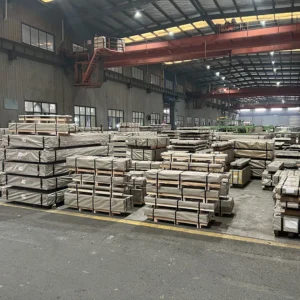old Rolled Electrical Steel: The Core Material for Modern Energy Efficiency
As the world accelerates toward cleaner energy, electric mobility, and industrial automation, the materials enabling this transformation are gaining unprecedented attention. One of the most crucial yet often overlooked materials in this evolution is cold rolled electrical steel. Engineered for high magnetic efficiency, low core losses, and thermal stability, cold rolled electrical steel is the heart of transformers, motors, and generators used in smart grids and electric vehicles.
This article explores the composition, manufacturing, applications, and future outlook of cold rolled electrical steel, highlighting its importance in supporting Europe and the Middle East’s energy and industrial strategies.
What is Cold Rolled Electrical Steel?
Cold rolled electrical steel is a specialized alloy processed under tight thermal and mechanical conditions to deliver superior magnetic properties. It is known for its ability to minimize power loss in alternating current (AC) applications. Unlike conventional carbon steels, cold rolled electrical steel is alloyed with silicon and carefully rolled at room temperature to achieve a precise thickness, smooth surface, and optimized grain structure.
There are two primary types:
- Cold Rolled Grain-Oriented (CRGO) Steel:
Designed for static machines like power transformers. It features aligned grains to maximize magnetic efficiency in one direction. - Cold Rolled Non-Grain-Oriented (CRNGO) Steel:
Suitable for rotating machines such as electric motors and generators, where magnetic fields operate in multiple directions.
Both types of cold rolled electrical steel are essential to improving efficiency and performance in energy-intensive systems.
Properties of Cold Rolled Electrical Steel
Cold rolled electrical steel exhibits unique properties tailored to electromagnetic applications:
- High Magnetic Permeability:
Enables the efficient transfer of magnetic flux with minimal energy loss. - Low Core Loss:
Reduces the conversion of electrical energy into heat, especially important in continuous-operation equipment. - Dimensional Precision:
Cold rolling produces uniform thickness and flatness, allowing precise assembly in motor and transformer cores. - High Surface Quality:
Smooth, defect-free surfaces improve insulation coating adherence and reduce localized losses. - Superior Insulating Coatings:
Advanced inorganic coatings reduce inter-laminar eddy currents and enhance corrosion resistance. - Thermal Stability:
Performs consistently across wide temperature ranges, crucial for power electronics and industrial systems.
These properties are fundamental to increasing equipment life, lowering energy consumption, and enhancing system reliability.
Manufacturing Process of Cold Rolled Electrical Steel
The production of cold rolled electrical steel is a carefully controlled process that ensures magnetic uniformity and mechanical strength:
- Melting and Casting:
High-purity steel is alloyed with silicon (typically 2–3.5%) to improve resistivity and reduce hysteresis loss. - Hot Rolling:
The steel is initially rolled at high temperatures to reduce thickness and begin forming grain structures. - Cold Rolling:
Rolled at room temperature to refine grain size, improve surface finish, and reduce thickness to target specifications. - Annealing:
Heat treatment relieves internal stress and optimizes the magnetic grain structure. Grain-oriented steel undergoes an additional secondary recrystallization. - Decarburization:
Removes carbon content to prevent magnetic aging and reduce core loss. - Coating:
A layer of electrical insulation is applied to each sheet, enhancing inter-laminar resistance and protecting against oxidation. - Final Inspection:
Precision testing ensures the steel meets all magnetic and mechanical performance standards.
The cold rolling process delivers electrical steel with the mechanical strength and magnetic performance required for critical applications.
Applications of Cold Rolled Electrical Steel
1. Power Transformers
Cold rolled grain-oriented steel is a standard material in high-voltage transformers. Its aligned grain structure allows for excellent magnetic efficiency along the flux path, minimizing no-load losses and improving thermal management.
2. Electric Motors
Motors in HVAC systems, electric vehicles, home appliances, and industrial drives use cold rolled non-grain-oriented steel to ensure energy efficiency, torque performance, and noise reduction.
3. Generators
From wind turbines to backup generators, cold rolled electrical steel is essential in rotor and stator cores, supporting high efficiency under dynamic loads.
4. Smart Energy Infrastructure
Modern grid equipment—such as voltage regulators, reactors, and intelligent transformers—relies on cold rolled steel to reduce energy loss and manage thermal loads.
5. Automotive Electrification
The growing electric vehicle (EV) industry is a major consumer of cold rolled non-grain-oriented steel, used in drive motors and onboard converters.
Across Europe and the Middle East, industries rely on cold rolled electrical steel for power systems that are efficient, reliable, and environmentally responsible.
Cold Rolled Electrical Steel in Europe and the Middle East
Europe: Efficiency, Innovation, and Compliance
Europe’s strict efficiency regulations and push for decarbonization have made cold rolled electrical steel a vital material:
- Ecodesign Directive:
Requires transformers and motors to meet minimum energy performance standards, driving demand for high-grade CRGO and CRNGO steel. - EV Expansion:
Countries like Germany, France, and the Netherlands are scaling up EV production, increasing usage of CRNGO in high-efficiency drive motors. - Renewables Integration:
Smart inverters and wind turbines demand cold rolled electrical steel for responsive, loss-reducing energy conversion.
Middle East: Urbanization and Energy Diversification
The Middle East is rapidly electrifying its cities and diversifying its energy mix:
- Smart City Projects:
Developments like NEOM (Saudi Arabia) and Lusail (Qatar) are being built with energy-efficient systems powered by cold rolled electrical steel. - Utility Upgrades:
Countries such as the UAE, Egypt, and Oman are investing in transformer upgrades using CRGO steel to enhance grid resilience. - Industry Modernization:
Electrification of industrial machinery, particularly in oil and gas facilities, is accelerating demand for CRNGO steel in high-efficiency motors.
In both regions, cold rolled electrical steel is an enabler of sustainable growth and technological modernization.
Advancements in Cold Rolled Electrical Steel Technology
Innovations are further enhancing the capabilities of cold rolled electrical steel:
- Ultra-Thin Gauges (0.18–0.23 mm):
Reduce eddy current loss and improve space efficiency, ideal for compact equipment. - Laser Domain Refinement:
Applied to CRGO sheets to reduce magnetic domain size and enhance directional efficiency. - Advanced Coatings:
Chromium-free, water-based coatings are now standard for improved insulation and sustainability. - Digital Manufacturing Controls:
Real-time monitoring ensures uniform thickness, grain orientation, and surface quality across production lines.
These advancements are helping manufacturers meet higher performance benchmarks while aligning with environmental standards.
Environmental Benefits
Cold rolled electrical steel supports environmental and energy goals through:
- Lower Energy Consumption:
Reduces core loss in transformers and motors, saving power over the lifespan of equipment. - Extended Equipment Life:
Lower heat generation reduces wear on components, improving durability and reducing maintenance. - Full Recyclability:
Steel is 100% recyclable, and most cold rolled electrical steel is made from recycled content. - Eco-Friendly Production:
Modern mills comply with global environmental standards (REACH, RoHS, ISO 14001), reducing their carbon footprint.
It is a vital material for achieving global sustainability goals in energy and transportation.
Market Outlook
The global market for cold rolled electrical steel is expected to grow significantly:
- Projected CAGR:
6–8% growth from 2024 to 2030, driven by electrification, renewables, and smart infrastructure. - Europe and the Middle East:
Are among the fastest-growing regional markets due to regulatory support and urban development initiatives. - Key Sectors:
EVs, power transmission, smart grids, and industrial electrification will remain the primary consumers of cold rolled electrical steel.
As governments and industries invest in energy-efficient technologies, cold rolled electrical steel will become even more strategically important.
Conclusion
Cold rolled electrical steel is more than a raw material—it is a foundation for modern energy and industrial systems. From power transformers to electric vehicle motors, it plays a vital role in enhancing efficiency, reducing emissions, and enabling sustainable development.
In Europe and the Middle East, where energy transition and infrastructure modernization are top priorities, cold rolled electrical steel supports every step of the journey. With continuous innovation and growing demand, it will remain central to powering the electrified world of tomorrow.




